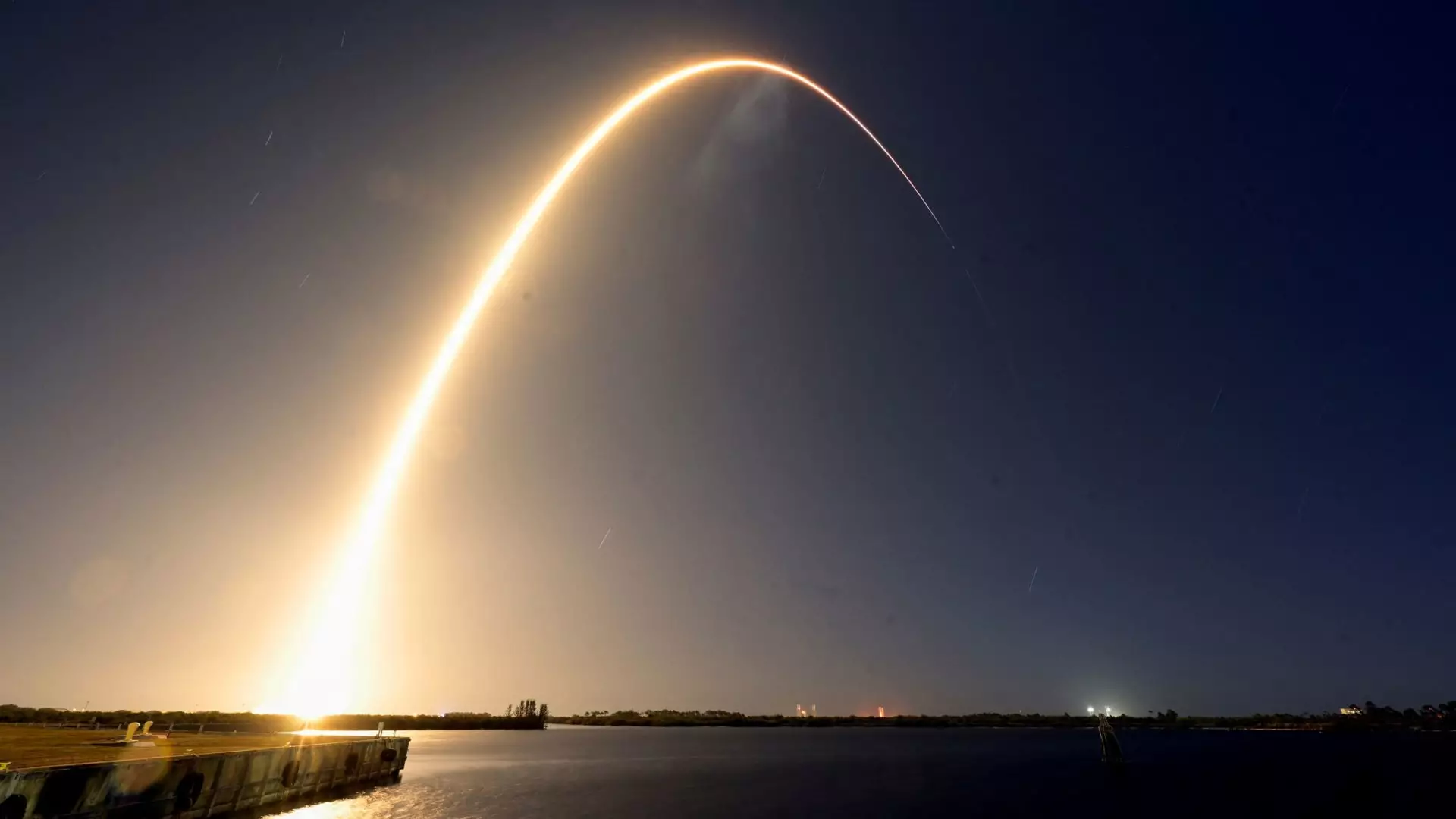A new era of lunar exploration is unfolding as American aerospace companies venture into the moon’s orbit, seeking to capitalize on new opportunities in space commerce, particularly through NASA’s Commercial Lunar Payload Services (CLPS) program. Among these pioneering firms, Firefly Aerospace has made significant strides towards its ambitious goal of reestablishing a human presence on the lunar surface. Launching its “Blue Ghost” cargo lander aboard SpaceX’s Falcon 9, Firefly is set to embark on a 45-day journey to the moon, marking a noteworthy development in U.S. lunar exploration efforts.
Founded in Texas, Firefly Aerospace has garnered attention for its innovative approach to satellite and spacecraft development. Although the company has made a name for itself with its Alpha rocket, capable of deploying satellites into orbit, it has recently expanded its focus to include lunar landers and space tugs. The “Blue Ghost,” named for a unique firefly species found in the United States, is an impressive nearly 7-foot-tall lander designed to carry payloads for various missions. The significance of this mission is underscored by its $101 million contract with NASA, which further cements Firefly’s role in advancing lunar research.
The Blue Ghost mission is not merely a technical endeavor; it is a strategic step that aligns with the broader goals of NASA’s Artemis program, which aims to return humans to the moon. Firefly’s CEO, Jason Kim, emphasized the company’s commitment to executing the mission flawlessly, highlighting crucial phases like on-orbit operations and the eventual touchdown on the lunar surface. The mission intends to achieve 17 specific milestones related to the lunar landing, with five already confirmed as successfully completed, including launching and spacecraft testing in orbit.
The Blue Ghost will deliver ten government and commercial payloads, symbolizing the multifaceted nature of contemporary lunar missions that blend scientific research with commercial opportunities. This diverse array of cargo underlines the CLPS initiative’s goal to facilitate various experiments and ventures on the moon. Firefly’s mission is part of NASA’s broader strategy to involve private companies in expanding lunar exploration, allowing for a multitude of stakeholders to contribute to the scientific endeavor.
Firefly’s venture is part of a competitive lunar landscape, where several companies are racing towards successful lunar landings. Notably, alongside Firefly’s mission, the Japanese company ispace aims to rectify its previous failure with another moon mission, showcasing the ongoing challenges within this emerging sector. The increasing activity from companies such as Astrobotic and Intuitive Machines illustrates a renaissance in moon missions, where collaborative rideshare agreements like that of Firefly and ispace allow for shared risks and resources.
The anticipation surrounding the Blue Ghost mission emphasizes the ongoing importance of lunar exploration in the context of future man’s journey beyond Earth. Firefly intends to operate the lander for a full lunar day—equivalent to about 14 Earth days—and into the lunar night, thereby pushing the boundaries of our current understanding of lunar conditions and capabilities. The mission is set to land in the Mare Crisium lunar basin on March 2, presenting an exciting opportunity for the company and the scientific community alike.
The Path Forward
As Firefly Aerospace progresses towards its goal, it serves not just as a symbol of technological advancement but also as a representation of humanity’s return to the moon. This mission outlines a roadmap for future endeavors, and as NASA encourages partnerships with multiple U.S. companies, the eventual goal of sustained lunar presence becomes increasingly viable. The success of missions like Blue Ghost could pave the way for a new epoch of exploration, innovation, and collaborative efforts that may transform our understanding of both the moon and broader cosmic realities. With as many as five U.S. companies potentially preparing lunar missions in the near future, the momentum in space exploration is undeniable as we venture further into this uncharted territory.

